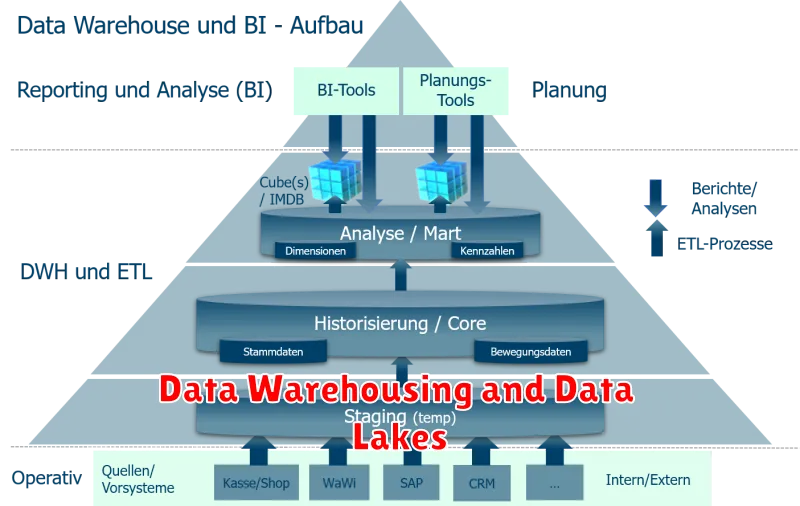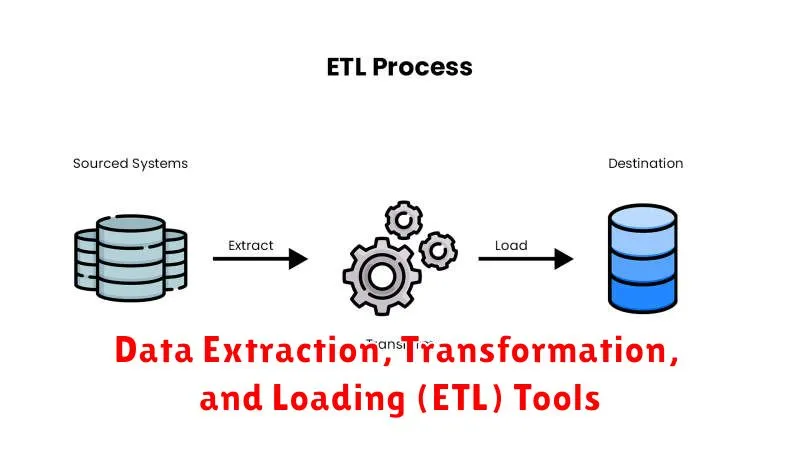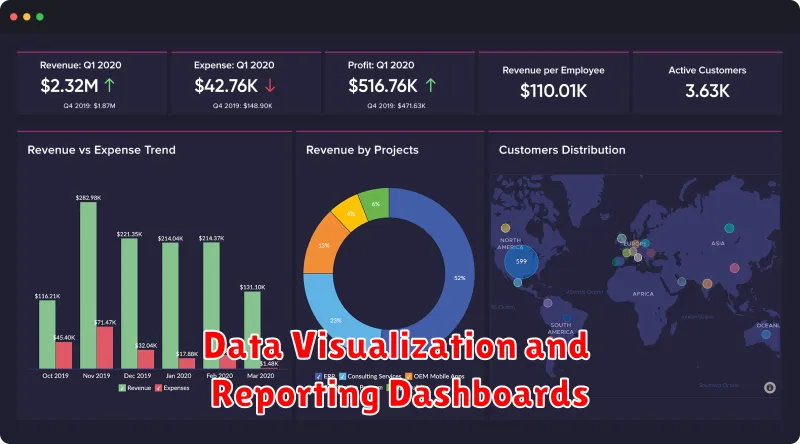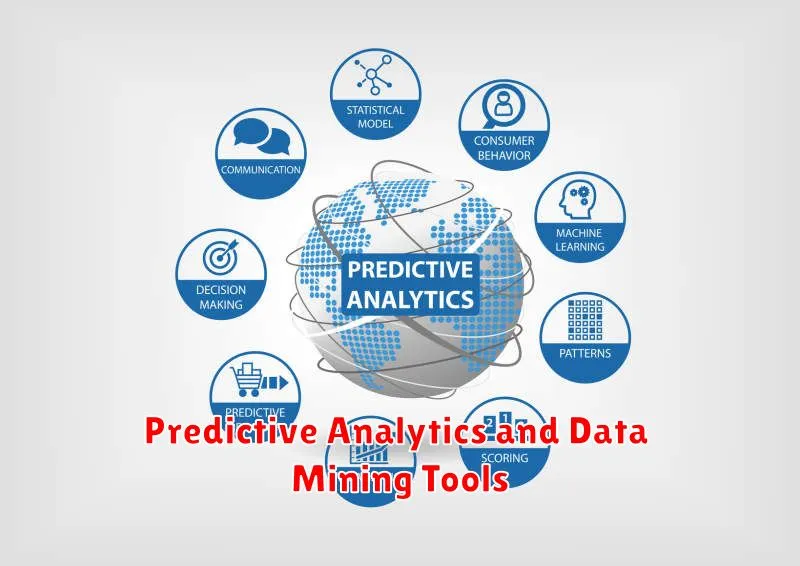In today’s data-driven world, businesses are constantly seeking ways to gain a competitive edge and make smarter decisions. This is where business intelligence software comes into play. By leveraging the power of data analytics, these platforms provide valuable insights that can transform how companies operate and achieve their goals.
Business intelligence software empowers organizations to harness the wealth of information available to them, turning raw data into actionable intelligence. From understanding customer behavior to optimizing marketing campaigns and streamlining operations, these tools provide the necessary tools for informed decision-making across all levels of the business.
What is Business Intelligence (BI) and Why is it Crucial?
In today’s data-driven world, businesses rely heavily on insights derived from their data to make strategic decisions. Business Intelligence (BI) is a process that transforms raw data into actionable insights, empowering organizations to understand their performance, identify trends, and make informed decisions.
BI involves collecting, cleaning, analyzing, and visualizing data from various sources. This process allows businesses to gain a comprehensive understanding of their operations, customer behavior, market trends, and competitor activities. By leveraging BI, organizations can:
- Identify growth opportunities: BI helps businesses discover new markets, expand into new product lines, or target specific customer segments.
- Improve operational efficiency: By analyzing data on production processes, supply chains, and customer service, businesses can optimize operations and reduce costs.
- Enhance customer experience: BI provides insights into customer preferences, purchase patterns, and satisfaction levels, enabling businesses to tailor products and services to meet individual needs.
- Make informed decisions: BI tools present data in an easily understandable format, enabling managers to make data-driven decisions rather than relying on gut feelings or intuition.
In conclusion, Business Intelligence (BI) is crucial for modern businesses as it provides a powerful framework for harnessing the value of data. By transforming raw data into actionable insights, BI empowers organizations to make informed decisions, improve operational efficiency, and ultimately drive business growth.
Components of a Comprehensive BI Solution
Business intelligence (BI) software empowers organizations to make data-driven decisions by transforming raw data into actionable insights. To ensure a robust and effective BI solution, several key components must work in harmony. A comprehensive BI solution encompasses the following elements:
Data Integration and Warehousing: This foundation involves gathering data from diverse sources, such as databases, spreadsheets, and cloud applications. Data is then cleansed, transformed, and stored in a central data warehouse for easy access and analysis.
Data Modeling and Analytics: Sophisticated data modeling techniques enable businesses to create meaningful relationships within the data. Analytical tools provide powerful capabilities for exploring trends, patterns, and anomalies, uncovering hidden insights that drive informed decisions.
Data Visualization and Reporting: Transforming complex data into clear, visually appealing dashboards and reports allows users to quickly grasp key insights. Interactive dashboards, charts, and graphs provide an intuitive way to understand trends and monitor performance.
Data Governance and Security: A robust BI solution prioritizes data quality, integrity, and security. Strong governance policies ensure data accuracy and consistency, while robust security measures protect sensitive information.
User Interface and Accessibility: A user-friendly interface is essential for accessibility and adoption across the organization. Intuitive navigation, customizable dashboards, and mobile compatibility empower users to access and leverage insights regardless of their technical expertise.
Predictive Analytics and Machine Learning: Advanced BI solutions leverage predictive analytics and machine learning algorithms to forecast future trends, identify opportunities, and mitigate risks. These capabilities enable proactive decision-making based on data-driven projections.
By integrating these components, organizations can build a comprehensive BI solution that supports informed decision-making, optimizes operations, and drives strategic growth. From data integration to predictive analytics, each element plays a critical role in unlocking the power of data for competitive advantage.
Data Warehousing and Data Lakes

Business intelligence (BI) software relies heavily on robust data storage and management systems to provide meaningful insights. Two prominent approaches in this domain are data warehousing and data lakes, each with its unique strengths and use cases.
Data Warehousing
A data warehouse is a centralized repository designed to store structured data from various sources. It undergoes a transformation process known as ETL (Extract, Transform, Load) to ensure data consistency and quality. This structured nature makes data warehouses ideal for:
- Reporting and analytics: Generating pre-defined reports, dashboards, and key performance indicators (KPIs).
- Historical analysis: Tracking trends and patterns over time, facilitating long-term decision-making.
- Business intelligence applications: Providing a consistent and reliable data foundation for BI tools.
Data Lakes
In contrast, a data lake is a vast repository that stores data in its raw, unprocessed form. This approach embraces both structured and unstructured data, including text, images, and videos. Key advantages of data lakes include:
- Data diversity: Capturing all types of data, enabling exploration and discovery of hidden insights.
- Scalability and flexibility: Handling massive datasets and evolving data schemas.
- Data exploration: Facilitating ad-hoc analysis and experimentation with new data sources.
Choosing the Right Approach
The choice between data warehousing and data lakes depends on the specific business requirements. For organizations prioritizing structured data, reporting, and historical analysis, a data warehouse is often the preferred solution. Conversely, data lakes are ideal for businesses seeking to harness data diversity, scalability, and data exploration capabilities. In many cases, a hybrid approach combining both data warehousing and data lakes may provide the optimal solution.
Understanding the nuances of data warehousing and data lakes is crucial for effectively leveraging BI software. By selecting the appropriate approach, organizations can unlock the full potential of their data, enabling data-driven insights that drive strategic decision-making and business success.
Data Extraction, Transformation, and Loading (ETL) Tools

Data extraction, transformation, and loading (ETL) tools are essential components of business intelligence (BI) software. They play a crucial role in the process of gathering data from various sources, preparing it for analysis, and loading it into data warehouses or data lakes. ETL tools are designed to streamline this process, enabling businesses to extract insights from their data more efficiently and effectively.
Data extraction involves pulling data from different sources, such as databases, spreadsheets, and applications. These sources can be internal or external to the organization, and ETL tools can handle diverse data formats and structures.
Data transformation is the process of converting data into a format that is suitable for analysis. This may involve cleaning, standardizing, aggregating, and enriching the data. ETL tools provide a wide range of transformation capabilities, allowing businesses to tailor data to their specific needs.
Data loading is the final step, where the transformed data is loaded into a target data repository, such as a data warehouse or data lake. ETL tools ensure that the data is loaded accurately and efficiently, minimizing data loss and errors.
By automating the ETL process, businesses can:
- Reduce manual effort and improve efficiency
- Enhance data quality and consistency
- Enable faster and more insightful analysis
- Make informed decisions based on reliable data
Choosing the right ETL tools is crucial for successful BI initiatives. Businesses should consider their specific data needs, the volume and complexity of data, and the desired level of automation when selecting ETL tools.
Data Visualization and Reporting Dashboards

Business intelligence (BI) software empowers organizations to transform raw data into actionable insights, driving strategic decision-making. A key component of effective BI is the use of data visualization and reporting dashboards. These interactive tools provide a comprehensive and user-friendly interface for visualizing data trends, patterns, and anomalies, enabling users to quickly grasp key information and make informed decisions.
Dashboards effectively communicate complex data through visually appealing charts, graphs, and tables. By presenting information in a digestible format, dashboards eliminate the need for users to sift through spreadsheets or raw data, saving time and resources. Key features of effective dashboards include:
- Real-time updates: Dashboards should reflect the most current data, providing a live snapshot of key metrics.
- Customizable views: Users should be able to tailor dashboards to their specific needs and preferences, focusing on relevant information.
- Interactive elements: Dashboards should enable users to drill down into specific data points, explore underlying details, and uncover further insights.
- Automated reporting: Dashboards can automatically generate reports and insights, streamlining data analysis and reporting processes.
Data visualization and reporting dashboards are essential for various business functions, including:
- Sales and marketing: Tracking sales performance, customer segmentation, and campaign effectiveness.
- Finance: Monitoring financial health, identifying revenue streams, and optimizing spending.
- Operations: Tracking production efficiency, supply chain management, and customer service performance.
- Human resources: Analyzing employee performance, workforce planning, and talent acquisition.
By leveraging the power of data visualization and reporting dashboards, organizations can unlock data-driven insights that inform strategic decisions, improve operational efficiency, and drive business growth.
Predictive Analytics and Data Mining Tools

Predictive analytics and data mining tools are essential components of business intelligence software, empowering organizations to extract valuable insights from their data and make data-driven decisions. These tools utilize advanced algorithms and statistical models to analyze historical data, identify patterns, and forecast future trends.
Data mining involves the process of discovering meaningful patterns and relationships within large datasets. Tools like decision trees, clustering algorithms, and association rule mining are used to identify customer segments, detect fraudulent activities, and optimize marketing campaigns.
Predictive analytics focuses on forecasting future outcomes based on historical data. Techniques like regression analysis, time series forecasting, and machine learning algorithms enable organizations to predict customer churn, sales revenue, and market demand.
By leveraging these tools, businesses can gain a competitive edge by:
- Improving customer segmentation and targeting
- Optimizing pricing strategies and inventory management
- Identifying potential risks and opportunities
- Enhancing operational efficiency and productivity
Leading business intelligence platforms typically integrate a range of predictive analytics and data mining tools, providing users with a comprehensive suite of capabilities for unlocking data-driven insights.
Key Benefits of Using BI Software
In today’s data-driven world, businesses need to make informed decisions based on accurate and timely information. This is where business intelligence (BI) software comes in. BI software helps organizations collect, analyze, and visualize data to gain valuable insights that support strategic decision-making. Here are some key benefits of using BI software:
Improved decision-making: BI software provides data-driven insights that help businesses understand trends, identify opportunities, and mitigate risks. This leads to more informed and accurate decisions that align with business goals.
Enhanced operational efficiency: BI software can identify areas for improvement in business processes and streamline operations. This can lead to cost savings, increased productivity, and improved customer service.
Better customer understanding: BI tools can help businesses analyze customer data to understand their needs, preferences, and behavior. This information can be used to personalize marketing campaigns, improve customer experience, and increase customer satisfaction.
Competitive advantage: Businesses that leverage BI software can gain a competitive advantage by making data-driven decisions and identifying emerging trends faster than their competitors. This allows them to stay ahead of the curve and respond to market changes quickly.
Increased profitability: By optimizing business processes, improving customer satisfaction, and making strategic decisions, BI software can help businesses increase profitability and achieve their financial goals.
Overall, BI software is an essential tool for modern businesses. It empowers organizations to unlock the potential of their data and make informed decisions that drive growth, profitability, and success.
Improved Decision-Making and Business Agility

In today’s fast-paced business environment, organizations are constantly seeking ways to gain a competitive edge. One key factor that can significantly impact success is data-driven decision-making. This is where business intelligence (BI) software comes into play, empowering businesses to leverage their data for strategic insights and improved agility.
BI software provides a comprehensive view of an organization’s data, enabling executives and managers to identify trends, patterns, and anomalies that might otherwise go unnoticed. This enhanced visibility empowers them to make informed decisions based on concrete data rather than relying on intuition or incomplete information. With access to real-time data and interactive dashboards, businesses can quickly adapt to changing market conditions, customer demands, and competitive landscapes.
By enabling quicker and more accurate decision-making, BI software significantly enhances business agility. Organizations can respond to challenges and opportunities with greater speed and efficiency, ultimately driving growth and profitability. This responsiveness allows businesses to seize opportunities faster, adapt to changing market dynamics more efficiently, and remain ahead of the competition.
Furthermore, BI software facilitates a data-driven culture within the organization. By making data accessible to all levels of employees, businesses encourage data-informed decision-making across departments. This collaborative approach fosters a more agile and responsive organizational structure, leading to better communication, improved workflows, and more effective problem-solving.
In conclusion, business intelligence software plays a pivotal role in achieving improved decision-making and business agility. By providing a robust framework for data analysis and visualization, BI empowers organizations to leverage their data effectively, gain actionable insights, and make strategic decisions that drive success. In a constantly evolving marketplace, businesses that embrace data-driven strategies will undoubtedly be better positioned for growth and prosperity.
Enhanced Operational Efficiency and Cost Savings
Business intelligence (BI) software plays a crucial role in driving operational efficiency and cost savings by providing businesses with data-driven insights. By analyzing vast amounts of data from various sources, BI software helps identify areas for improvement, optimize processes, and reduce inefficiencies. Real-time dashboards and reporting offer a clear view of key performance indicators (KPIs), enabling businesses to monitor progress and make informed decisions.
One key area where BI software excels is in supply chain optimization. By analyzing historical data, demand patterns, and supplier performance, businesses can forecast demand accurately, optimize inventory levels, and reduce lead times. This leads to significant cost savings in areas such as warehousing, transportation, and inventory holding.
Process automation is another area where BI software empowers businesses to streamline operations. By identifying repetitive tasks and automating them, companies can free up employees to focus on more strategic activities. This not only improves efficiency but also reduces the risk of errors and improves overall productivity.
Cost optimization is a direct outcome of improved operational efficiency. By identifying areas of waste and inefficiencies, businesses can reduce expenses and improve profitability. For instance, BI software can analyze energy consumption patterns, identify opportunities for cost reduction, and optimize resource allocation.
Overall, BI software empowers businesses to make data-driven decisions that drive operational efficiency and cost savings. By leveraging the power of data analysis, businesses can optimize their processes, streamline operations, and unlock significant cost reductions, ultimately leading to greater profitability and competitive advantage.
Increased Revenue Generation and Profitability
Business intelligence (BI) software empowers organizations to unlock data-driven insights that fuel strategic decision-making and drive significant revenue growth. By harnessing the power of data analytics, businesses gain a comprehensive understanding of their operations, customer behavior, market trends, and competitive landscape.
Through data visualization and advanced reporting capabilities, BI software provides actionable insights that enable businesses to identify growth opportunities, optimize pricing strategies, and personalize customer experiences. By understanding customer preferences and purchasing patterns, businesses can develop targeted marketing campaigns that resonate with specific segments and drive higher conversion rates.
Moreover, BI software plays a crucial role in streamlining operations and improving efficiency. By analyzing operational data, businesses can identify bottlenecks, optimize resource allocation, and reduce costs. Real-time dashboards provide a clear overview of key performance indicators (KPIs), enabling businesses to monitor progress, identify areas for improvement, and make data-driven adjustments in real-time.
Ultimately, BI software enables businesses to achieve sustainable revenue growth and profitability by providing a clear understanding of their operations, customer behavior, and market dynamics. By making data-driven decisions, organizations can maximize efficiency, optimize resources, and drive strategic growth.
Better Customer Understanding and Engagement
Business intelligence software plays a crucial role in enhancing customer understanding and engagement. By analyzing vast amounts of data from various sources, including customer interactions, website traffic, and social media, businesses gain valuable insights into customer behavior, preferences, and pain points. This data-driven understanding allows companies to personalize their marketing campaigns, tailor their products and services, and provide exceptional customer experiences.
For instance, by tracking customer interactions with a company’s website or mobile app, businesses can identify areas for improvement. They can analyze the most frequently visited pages, the common points of friction, and the reasons behind customer abandonment. This information enables companies to optimize their user interfaces, simplify navigation, and enhance the overall user experience.
Furthermore, business intelligence software enables businesses to segment their customer base based on demographics, purchasing behavior, and other relevant criteria. This segmentation allows for targeted marketing efforts, personalized product recommendations, and customized communication strategies. By sending relevant messages to the right audience at the right time, companies can increase engagement, drive conversions, and foster lasting customer relationships.
In conclusion, business intelligence software empowers businesses to unlock data-driven insights that lead to better customer understanding and engagement. By leveraging these insights, companies can enhance customer experiences, optimize marketing campaigns, and ultimately drive business growth.
Choosing the Right BI Software for Your Business Needs
Business intelligence (BI) software is a powerful tool for organizations of all sizes. By harnessing the power of data, BI tools can help businesses make informed decisions and gain a competitive edge. However, with so many BI solutions on the market, choosing the right one can feel overwhelming. This article will guide you through the key considerations when selecting the best BI software for your unique business needs.
1. Define Your Business Objectives: Before diving into the technical details, it’s essential to clearly define your business objectives. What do you hope to achieve with BI software? Are you looking to improve customer service, streamline operations, or enhance sales? Once you have a clear understanding of your goals, you can start evaluating BI solutions based on their ability to meet those objectives.
2. Consider Your Data Sources: BI software is only as good as the data it analyzes. Evaluate your current data sources and their compatibility with the chosen BI solution. Will you need to integrate data from multiple systems? Does the BI software support your preferred data formats?
3. Evaluate User-Friendliness: BI tools are designed for both data analysts and business users. Consider the level of technical expertise required to use the software. Look for solutions with intuitive interfaces and dashboards that are easy to navigate and understand. A user-friendly platform will encourage wider adoption and maximize the value of your BI investment.
4. Assess Scalability and Flexibility: Your business needs may evolve over time. Choose BI software that can scale with your growing data volumes and changing requirements. Consider features like customizable dashboards, data visualization options, and the ability to integrate with other business applications.
5. Budget and Pricing Models: BI software comes with varying pricing models. Evaluate the cost of licensing, implementation, and ongoing maintenance. Compare subscription-based models, one-time purchase options, and the total cost of ownership before making a final decision.
6. Vendor Support and Training: Technical support and training are crucial for successful BI implementation. Research the vendor’s reputation for customer service, available resources, and the quality of training programs. A reliable vendor will provide the support you need to get the most out of your BI investment.
Choosing the right BI software is a significant decision for any organization. By considering these factors, you can ensure that you select a solution that aligns with your specific business needs, budget, and future growth plans. Unlocking data-driven insights through BI empowers you to make informed decisions, improve efficiency, and drive your business toward success.
Factors to Consider: Scalability, Integration, and User-Friendliness
In the ever-evolving world of business, data is king. Harnessing the power of data to gain valuable insights is no longer a luxury; it’s a necessity. This is where business intelligence (BI) software comes into play, empowering businesses to transform raw data into actionable information. However, with numerous options available, choosing the right BI software can be daunting. To navigate this landscape, consider these crucial factors: scalability, integration, and user-friendliness.
Scalability refers to the software’s ability to handle growing data volumes and user demands. As your business expands, your BI solution should adapt seamlessly. Look for software that offers flexible storage options, efficient processing capabilities, and the ability to scale up or down as needed. This ensures your data remains readily accessible and analyzable, regardless of your company’s growth trajectory.
Integration is equally critical. Your BI software should seamlessly integrate with your existing systems, such as CRM, ERP, and databases. This eliminates data silos and fosters a unified view of your business. Seamless integration facilitates real-time data access, allowing for more accurate and timely insights. Consider software that offers a robust API framework and pre-built connectors for compatibility with your existing technology stack.
Finally, user-friendliness is paramount. The best BI software is one that’s easy to use and understand, regardless of technical expertise. Look for software with an intuitive interface, drag-and-drop functionality, and comprehensive reporting tools. These features empower users across your organization to extract meaningful insights from data, fostering data-driven decision-making at every level.
By carefully considering these factors – scalability, integration, and user-friendliness – you can select the BI software that best aligns with your business needs. This strategic investment can unlock the power of data, drive informed decision-making, and ultimately propel your company toward success.
Top BI Software Solutions in the Market
In today’s data-driven world, businesses are constantly seeking ways to leverage their data for strategic decision-making. Business intelligence (BI) software has become an indispensable tool in this pursuit, enabling organizations to extract meaningful insights from their data and gain a competitive edge.
The market is brimming with a diverse range of BI solutions, each offering a unique set of features and capabilities. Here are some of the top BI software solutions in the market:
Tableau
Tableau is a highly acclaimed BI platform known for its user-friendly interface and powerful visualization capabilities. Its drag-and-drop functionality empowers users of all technical backgrounds to create insightful dashboards and reports with ease. Tableau’s ability to connect to various data sources and its robust analytics features make it a popular choice for organizations of all sizes.
Power BI
Power BI, developed by Microsoft, is a comprehensive BI solution that seamlessly integrates with other Microsoft products. It offers a wide array of data visualization tools, interactive dashboards, and advanced analytics capabilities. Power BI’s strong data connectivity and its ability to cater to both business users and data analysts make it a versatile and widely adopted BI platform.
Qlik Sense
Qlik Sense is a self-service BI platform that emphasizes data discovery and exploration. Its associative engine allows users to navigate data relationships intuitively, uncovering hidden patterns and insights. Qlik Sense’s interactive visualizations, real-time data updates, and user-friendly interface make it an excellent choice for organizations seeking to empower their business users with data insights.
Oracle Business Intelligence (OBI)
OBI is a comprehensive enterprise-grade BI solution from Oracle. It offers a wide range of features, including data warehousing, data mining, reporting, and analytics. OBI’s scalability, advanced analytics capabilities, and comprehensive security measures make it a suitable choice for large enterprises with complex data requirements.
SAP BusinessObjects
SAP BusinessObjects is a leading BI platform that integrates seamlessly with SAP’s ERP systems. It provides a comprehensive suite of tools for data analysis, reporting, and dashboard creation. SAP BusinessObjects’ strong data governance features and its ability to handle large volumes of data make it a robust solution for enterprises seeking to optimize their business processes.
These are just a few of the many excellent BI software solutions available in the market. The best solution for your organization will depend on your specific needs, budget, and technical expertise. By carefully evaluating your requirements and exploring the features of different platforms, you can select the BI software that empowers your team to unlock data-driven insights and make strategic decisions that drive business growth.
The Future of BI: Trends Shaping the Industry
The business intelligence (BI) landscape is constantly evolving, driven by technological advancements and the increasing demand for data-driven insights. As we move forward, several trends are shaping the future of BI, empowering organizations to make more informed and strategic decisions.
Artificial intelligence (AI) and machine learning (ML) are playing a pivotal role in transforming BI. AI-powered tools can automate data analysis, identify patterns, and generate predictive insights, freeing up analysts to focus on higher-level tasks. ML algorithms can learn from historical data and improve their accuracy over time, enabling organizations to make more precise predictions.
Cloud-based BI solutions are becoming increasingly popular, offering greater flexibility, scalability, and affordability. Cloud platforms allow businesses to access BI tools and data from anywhere, anytime, without the need for expensive on-premises infrastructure. This enables organizations to scale their BI capabilities as their needs evolve.
Data democratization is a key trend in BI, empowering users across the organization to access and analyze data. Self-service BI tools allow business users to explore data, create reports, and gain insights without relying on IT professionals. This fosters a data-driven culture and encourages greater collaboration.
Data storytelling is gaining momentum, emphasizing the importance of communicating data insights effectively. BI tools are incorporating visualization and storytelling capabilities, allowing users to present data in compelling and engaging ways. This helps organizations translate data into actionable insights that drive decision-making.
Real-time analytics is becoming crucial for organizations to stay ahead of the curve. BI tools are integrating real-time data streams, allowing businesses to monitor key metrics, track performance, and respond quickly to changing market conditions. This enables organizations to make agile and informed decisions based on the latest data.
As BI continues to evolve, organizations must embrace these trends to unlock the full potential of their data. By leveraging AI, cloud solutions, data democratization, data storytelling, and real-time analytics, businesses can gain a competitive edge, improve efficiency, and drive strategic success.
Cloud-Based BI, Mobile BI, and the Rise of AI-Powered Analytics
The landscape of business intelligence (BI) is rapidly evolving, driven by the convergence of cloud computing, mobile accessibility, and the transformative power of artificial intelligence (AI). These trends are ushering in a new era of data-driven decision-making, empowering organizations to glean deeper insights from their data and unlock new opportunities for growth.
Cloud-based BI has emerged as a dominant force, offering scalability, flexibility, and cost-effectiveness. Cloud platforms enable businesses to access and analyze data from anywhere, anytime, without the need for extensive on-premises infrastructure. This agility empowers organizations to scale their BI capabilities as their data volumes grow and adapt to changing business needs.
Complementing cloud-based BI is the rise of mobile BI. With smartphones and tablets becoming ubiquitous, businesses are now able to access and interact with data on the go. Mobile BI dashboards and reports provide real-time insights, enabling executives and decision-makers to monitor key performance indicators (KPIs) and make informed decisions wherever they are.
AI is revolutionizing the BI landscape by automating data analysis and uncovering hidden patterns and insights that may elude human analysts. AI-powered analytics can identify trends, predict outcomes, and recommend actions, empowering businesses to make more accurate and informed decisions. This automation frees up human analysts to focus on higher-value tasks, such as strategic planning and data storytelling.
The convergence of cloud-based BI, mobile BI, and AI-powered analytics is creating a powerful synergy that is transforming how organizations leverage data. This paradigm shift is empowering businesses to make data-driven decisions with greater speed, agility, and accuracy, ultimately leading to improved business outcomes and competitive advantage.

